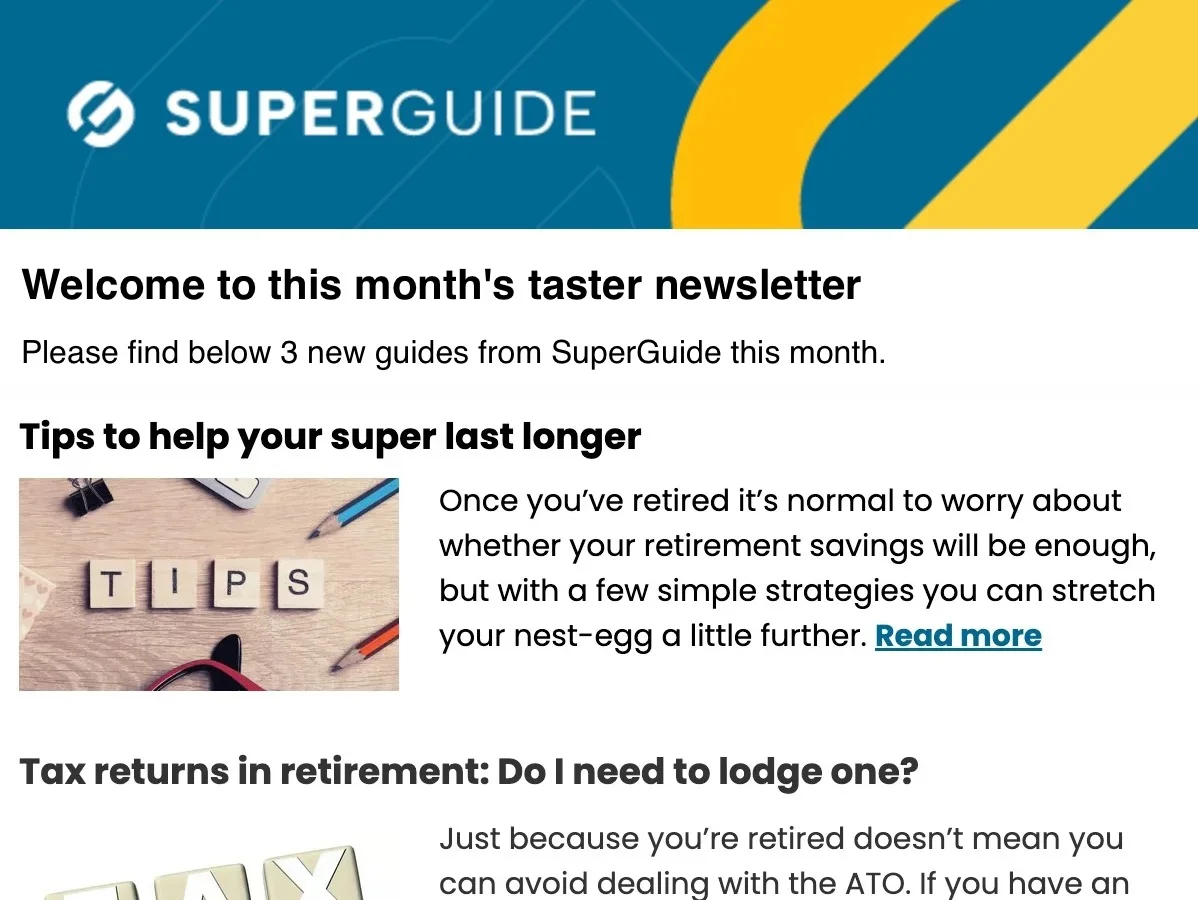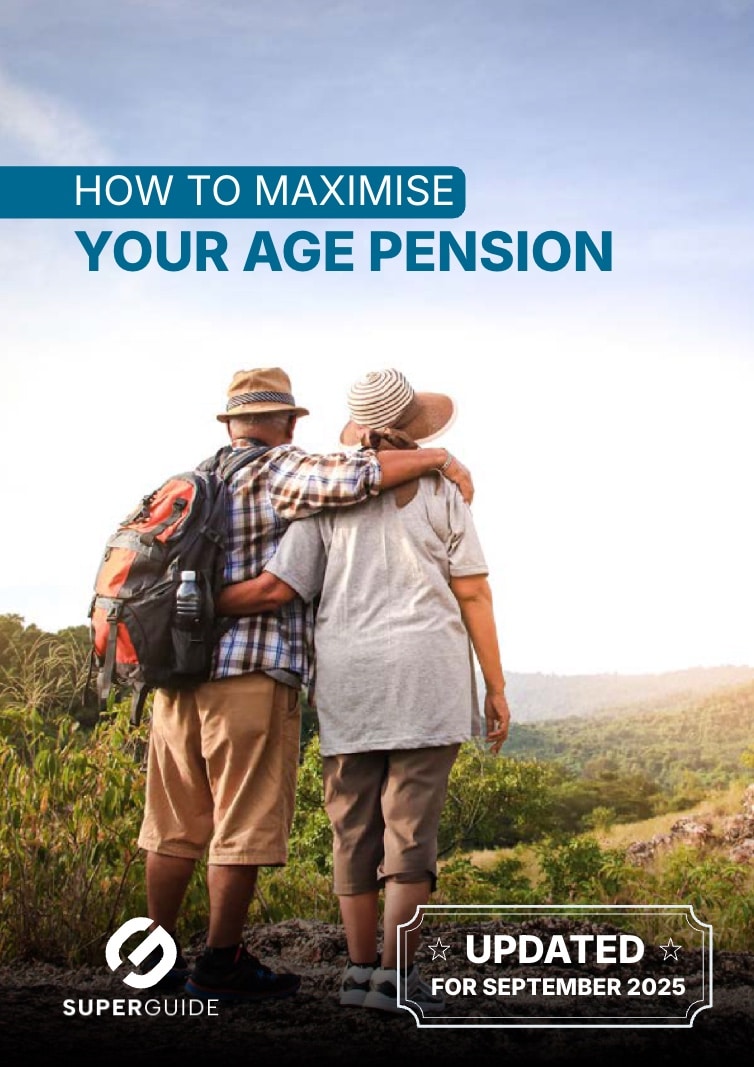In this guide
- What is the Carer Payment?
- Who is eligible for the Carer Payment?
- What is the income and assets test for the Carer Payment?
- How much is the Carer Payment and is it taxed?
- Choosing between the Carer Payment and Age Pension
- Similarities between receiving the Carer Payment and the Age Pension
- Differences between the rules for the Carer Payment and Age Pension
- What happens if the person you care for dies?
Providing care to help someone else is a labour of love, but if your caring responsibilities mean you can’t fit in time for employment and earn an income, it makes the task even more difficult.
The Australian Government recognises the important role carers play in the community by offering an income support payment called the Carer Payment to eligible carers.
According to Australian Bureau of Statistics figures, as of 31 March 2023 there were 304,500 Australians receiving the Carer Payment.
Carers tend to be older, perhaps reflecting the number of older people caring for an ill or frail spouse, with 28% of recipients aged 55 to 64. However, the number of carers aged 65 and over is growing. According to the Australian Institute of Health and Welfare, these numbers have risen in recent years in line with increases to the qualifying age for the Age Pension.
Females are the main recipients (71%) of Carer Payments, with many people continuing to receive these support payments for long periods. Almost half (49%) of recipients receive payments for five years or more.
What is the Carer Payment?
The Carer Payment is a fortnightly payment administered by Services Australia to help carers pay for their basic living costs.

Free eBook
Retirement planning for beginners
Our easy-to-follow guide walks you through the fundamentals, giving you the confidence to start your own retirement plans.
"*" indicates required fields
You may be eligible for the Carer Payment if you provide constant care to someone for at least six months, although you don’t need to wait six months before applying.
Constant care means you are providing someone with care for a large amount of time each day, roughly a normal working day, and this level of care stops you from working full time.
The care can include physical assistance (with lifting or helping the person get dressed), guidance (supporting shopping or ensuring the right medication is taken) and supervision (supporting independence and safety).
This constant care needs to be provided in the care recipient’s home, your home or in a hospital.
Care recipients can be someone with a disability or medical condition, or an adult who is frail aged. Services Australia defines frail aged as an older Australian in need of a substantial level of care and support.
The Carer Payment is also paid if you’re caring for someone with a terminal illness.
Who is eligible for the Carer Payment?
To receive the Carer Payment, both you and the person to whom you are providing care must be eligible.
On the day you apply for a Carer Payment, and to continue receiving it, you and the care recipient must both be Australian residents and living in Australia.
Manage your retirement savings with confidence – for free

Get practical guidance from independent experts to help you make the most of your finances in retirement with a free SuperGuide account.
Find out moreServices Australia classifies Australian residents as Australian citizens, permanent residence visa holders or protected Special Category visa holders from New Zealand.
Recent arrivals may have to wait two to four years to be eligible to receive these payments. See Services Australia for more details.
When applying for the Carer Payment, you need to provide details about the person receiving care and the care provided. Supporting evidence and medical information may also be required.
You are permitted to share the caring responsibilities with another person and both claim the payment, but each claim will be assessed individually. If you care for multiple people, different rules apply.
What is the income and assets test for the Carer Payment?
Both you and the care recipient are assessed under income and assets tests:
1. Income test for carer payments
Most types of income are included in the income test, including income from financial assets such as super, if you are above the Age Pension age.
A single person can earn up to $212 per fortnight before tax to qualify for the full Carer Payment, while couples can earn up to $372 combined. Payments then reduce by 50c in the dollar for income above these levels.
You are no longer eligible for the Carer Payment once your income per fortnight before tax is more than:
Supercharge your retirement

Get pension and retirement tips and strategies with our free monthly newsletter.
"*" indicates required fields
- Single – $2,510.00
- Couple – $3,836.40
- Couple living apart due to ill health – $4,968.00
2. Assets test for carer payments
Services Australia counts any assets you own in full or part, such as financial assets (including super if you are over Age Pension age), property or possessions (including debts owed to you and overseas assets), but not your family home or the first two hectares surrounding it.
The table below shows the asset limits for a full pension and cut-off points for a part pension from 20 March 2025.
| Homeowner | Non-homeowner | |||
|---|---|---|---|---|
| Full pension | Part pension | Full pension | Part pension | |
| Single | $314,000 | $697,000 | $566,000 | $949,000 |
| Couple combined | $470,000 | $1,047,500 | $722,000 | $1,299,500 |
| Couple separated due to illness, combined | $470,000 | $1,236,000 | $722,000 | $1,488,000 |
| Couple, one person eligible, combined | $470,000 | $1,047,500 | $722,000 | $1,299,500 |
Source: Services Australia
These limits and cut-offs are reassessed in March, July and September each year.
3. Income and asset limits for care recipients
If the care recipient does not receive a pension or benefit from Services Australia or the DVA, their:
- Income must be less than $140,795 a year before tax
- Assets must be worth less than $868,500 (excluding their principal home and the first two hectares surrounding it).
These limits are reassessed on January 1 each year and may also include the income and assets of some family members.
How much is the Carer Payment and is it taxed?
The amount of Carer Payment you receive depends on your personal circumstances and includes an assessment of the income you (and your partner) receive from employment.
Payment rates for the Carer Payment are reviewed twice a year on 20 March and 20 September.
Manage your retirement savings with confidence – for free

Get practical guidance from independent experts to help you make the most of your finances in retirement with a free SuperGuide account.
Find out moreFortnightly Carer Payment rates for 20 March 2025 to 20 September 2025
| Carer Payment rate per fortnight | Single | Couple (each person) | Couple (combined) | Couple (each person when separated due to ill health) |
|---|---|---|---|---|
| Maximum basic rate | $1,051.30 | $792.50 | $1,585.00 | $1,051.30 |
| Maximum pension supplement | $83.60 | $63.00 | $126.00 | $83.60 |
| Energy supplement | $14.10 | $10.60 | $21.20 | $14.10 |
| Total | $1,149.00 | $866.10 | $1,732.20 | $1,149.00 |
Source: Services Australia
If you or the care recipient have reached Age Pension age (now 67), your Carer Payment is considered a taxable Centrelink payment and you may need to lodge an annual tax return.
Services Australia doesn’t automatically deduct tax from Carer Payments, but you can request it or set up an automatic deduction in my.gov.au.
If you receive a Carer Payment, you must keep Services Australia updated on your personal circumstances and any changes to the caregiving arrangements (such as taking a break, going overseas or stopping the carer role – see table below).
Choosing between the Carer Payment and Age Pension
If you receive the Carer Payment and are about to turn 67 (Age Pension age), Services Australia will contact you asking if you wish to continue receiving the Carer Payment or transfer to the Age Pension.
You are only permitted to receive one of these income payments.
You are required to tell Services Australia which payment you wish to receive and whether you have any super, otherwise your Carer Payment may be stopped when you reach Age Pension age.

Free eBook
How to maximise your Age Pension
Learn tips that help you make the most of the Age Pension so your retirement savings last longer.
"*" indicates required fields
Similarities between receiving the Carer Payment and the Age Pension
In some ways, receiving a Carer Payment is similar to the Age Pension.
In terms of the payment rate, while the maximum base rates are comparable, your actual payments will depend on your individual circumstances rather than being a set payment amount (see table below).
Eligibility for both the Carer Payment and Age Pension are assessed using an income and an assets test.
If you receive either the Carer Payment or the Age Pension, you will receive a Pensioner Concession Card from the government.
The rate of rental assistance you receive with both payments is the same unless you are single and share privately rented accommodation, in which case the rate is different.
Both the Carer Payment and Age Pension are counted as part of your taxable income, but the Carer Payment is only taxable when the carer or care recipient reach Age Pension age.
Differences between the rules for the Carer Payment and Age Pension
| Situation | Carer Payment rules | Age Pension rules |
|---|---|---|
| Income and assets test for care recipient | Income and assets of the care recipient are assessed if they are not already receiving income support from Services Australia or DVA. | Not applicable |
| Review of personal circumstances | Both care provider and care recipient’s circumstances may be reviewed to confirm the care recipient’s needs still qualify. | Recipients of both the Age Pension and Carer Allowance may have personal circumstances reviewed. Ongoing eligibility for Carer Allowance may be reviewed. |
| Overseas travel | Care providers travelling temporarily outside Australia without the care recipient are still eligible for payments for up to 6 weeks if respite days are available. Care providers travelling temporarily outside Australia with the care recipient are paid for the first 6 weeks. This may be extended in some circumstances. If either care provider or recipient stop living in Australia, Carer Payments stop. Payments don’t stop if you qualify under an international social security agreement. See Centrelink website here. | Age Pension recipients remain eligible when travelling outside Australia regardless of whether it’s temporary or you’re living in another country. (Some exceptions apply.) Age Pension rate paid while travelling overseas may change. See Centrelink website here. |
| Respite, care breaks and hospitalisation | Care provider entitled to respite breaks of up to 63 days each calendar year. After this, payments may be cancelled. Additional 63 days of care breaks per calendar year are available if the care recipient is in hospital temporarily and you still help with care. | Care breaks have no impact on Age Pension payments. |
| Carer Supplement | If you receive the Carer Payment on 1 July, you are eligible for $600 annual Carer Supplement. | Age Pension recipients ineligible for annual $600 Carer Supplement, but are eligible if paid the Carer Allowance. |
| Rent Assistance | Care providers eligible for payments may receive higher maximum rate of rent assistance if single and sharing privately rented accommodation. | Carer providers receiving the Age Pension may receive lower maximum rate of rent assistance if single and sharing privately rented accommodation. |
| Working, volunteering, studying or training | Care providers remain eligible for payments when working, volunteering, studying and training. Activities can be undertaken for up to 25 hours a week, including travel time. Any income received may affect payment rate. | Age Pension recipients have no hourly limits when working, volunteering, studying or training. Any income received may affect payment rate. |
| Study assistance | Care providers who study may be entitled to the Pensioner Education Supplement and the Education Entry Payment. | Age Pension recipients who study are ineligible for both the Pensioner Education Supplement and Education Entry Payment. |
| Casual or contract work | Care providers undertaking casual or contract work may be required to wait for payments if during the 6 months before claiming they (or their partner) stopped contract, casual or intermittent work. See Centrelink’s seasonal work preclusion period. | Age Pension recipients are not affected by Centrelink’s seasonal work preclusion period. |
Source: Services Australia
What happens if the person you care for dies?
The death of the care recipient will have a different impact depending on whether you are receiving a Carer Payment or the Age Pension.
| Situation | Carer Payment | Age Pension |
|---|---|---|
| Care recipient was your partner | You may be eligible for a lump sum bereavement payment if your partner was receiving income support payments from Services Australia or DVA. You may continue receiving payments for up to 14 weeks, with fortnightly payments adjusted to single rate. You may consider transferring to Age Pension or other payment. | You may be eligible for a lump sum bereavement payment if your partner was receiving income support payments from Services Australia or DVA. You continue receiving Age Pension with regular fortnightly payments adjusted to single rate. |
| Care recipient was not your partner and their partner is receiving a Centrelink pension or benefit, DVA Service Pension or income support supplement | Ineligible for bereavement payment. You may continue receiving Carer Payment for up to 14 weeks before possible transfer to Age Pension or other payment. | Ineligible for bereavement payment, but you continue receiving Age Pension. |
| Care recipient was not your partner and their partner is not receiving a Centrelink pension or benefit, DVA Service Pension or income support supplement | You may be eligible for a bereavement payment and may continue receiving the Carer Payment for up to 14 weeks, after which you may transfer to the Age Pension or another payment. | Ineligible for a bereavement payment, but you continue receiving the Age Pension. |
| Care recipient was single | You may be eligible for a bereavement payment and may continue receiving the Carer Payment for up to 14 weeks, after which you may transfer to the Age Pension or another payment. | Ineligible for a bereavement payment, but you continue receiving the Age Pension. |
Source: Services Australia

Leave a Reply
You must be logged in to post a comment.